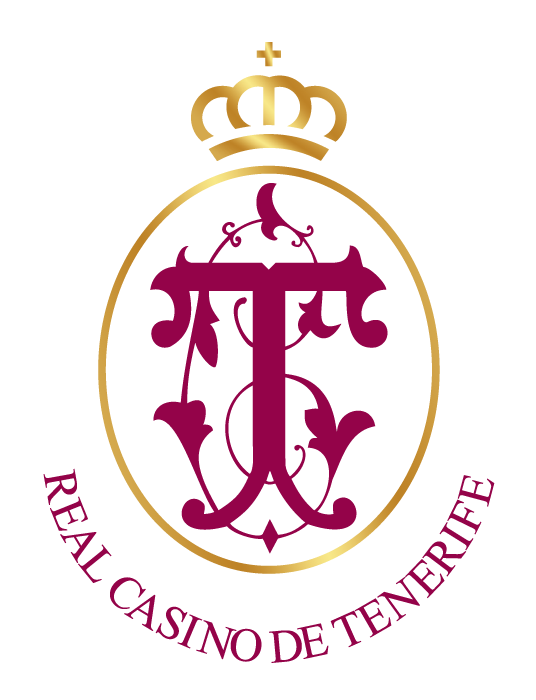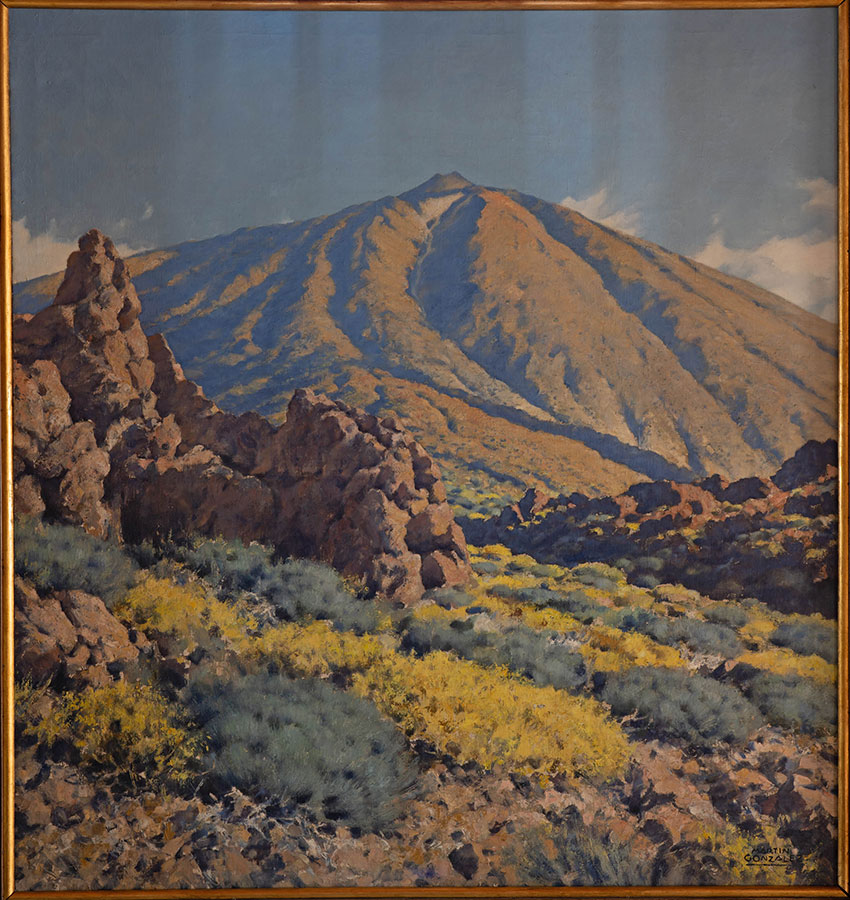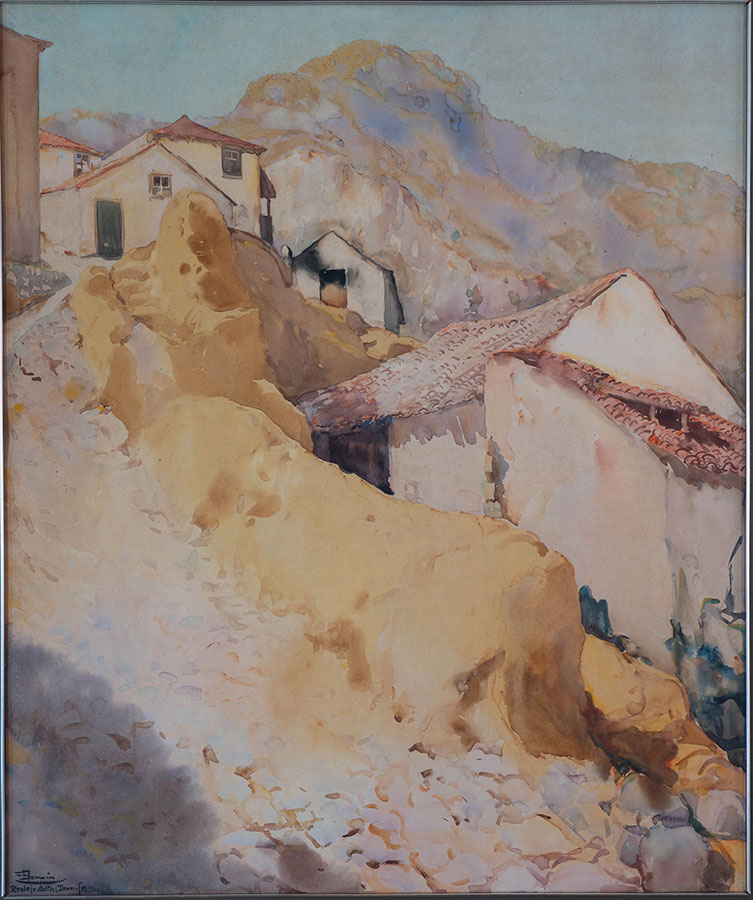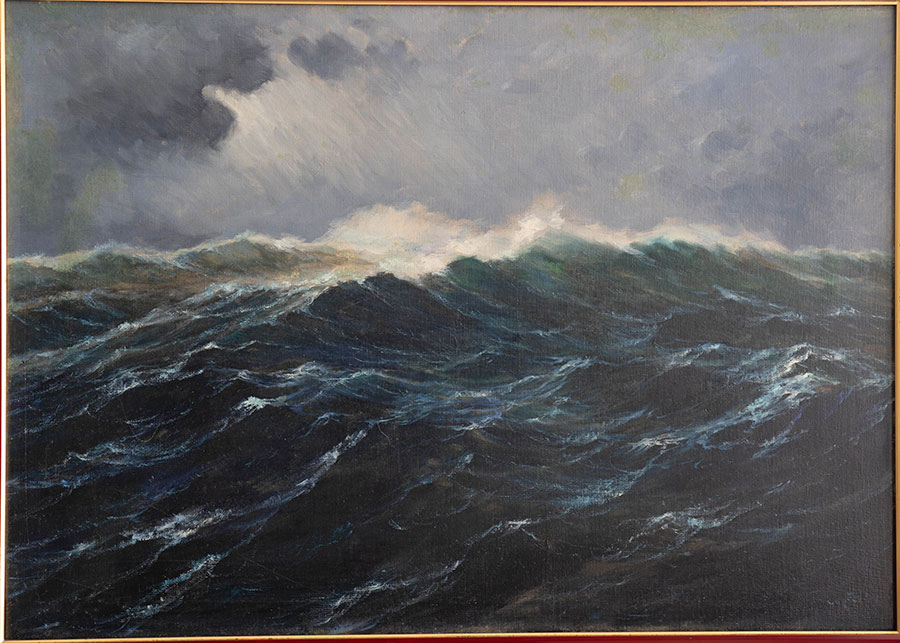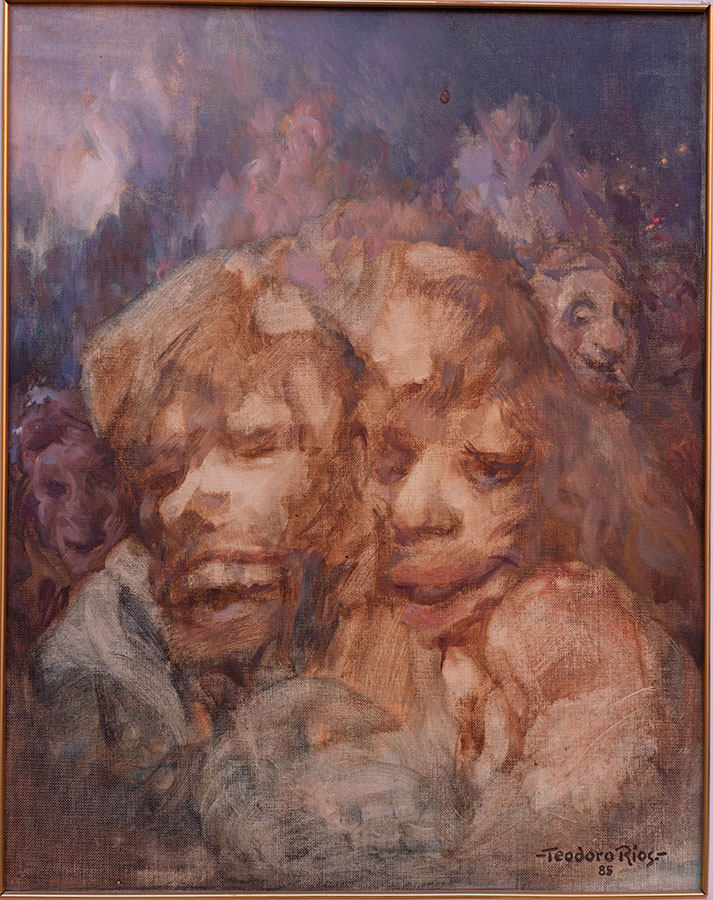
- Type of work: Easel painting
- Technique: Oil on canvas adhered to tablex
- Approximate dimensions: 73 x 55 cm
- Subject: Fantastic
- Title: Grotesque masks
- Author: Teodoro Rios (1917-1992)
- Chronology or Year: 1985
- Historical-artistic analysis:
Style: Portrait within realism, but with a certain expressionism due to the grotesque nature of the images represented.
Description: As a bust portrait slightly turned to the left, it presents a group of figures, about 6, whose disfigured faces show grotesque features. The image alluding to the carnival is built with thick brushstrokes extended with ease and freedom, where siennas, browns and ochers combine with some greenish and bluish tones. The fluidity of the painting and the certain lack of definition of the forms, whose imprecise margins merge with each other, with special interest in the expression of the face, so far from the solid drawing and the tight brush of his portraits, are striking.
Date of receipt: May 15, 1985, as a donation from the artist on the occasion of the exhibition held at the Casino Hall, from May 1 to 15, 1985.
Observations: In the 1983 exhibition Teodoro Rios had already introduced a new theme, that of faces and masks. In 1985 he returned with landscapes in oil and watercolor along with a dozen studies of carnival. With this new theme he joins the new impulse that he wants to give to the carnival festival, but focusing on the mask, the protagonist of the event, where the grotesque allows him to delve into the expression of the character, in his moods.
About the author: Teodoro Ríos Rodríguez (Cabaiguán, Cuba, 1917 – Santa Cruz de Tenerife, 1992), son of emigrant palmeros in Cuba, moved to La Palma in 1932, beginning his artistic studies that year at the Escuela de Artes y Oficios de Santa Cruz de la Palma, which he continued the following year at the Círculo de Bellas Artes de Santa Cruz de Tenerife under the teachings of Francisco Bonnín. With a scholarship from the City Council of Santa Cruz de la Palma, he furthered his training in Madrid, at the San Fernando School of Fine Arts, under the tutelage of Chicharro and Benedito. After the parenthesis of the Civil War, period in which he remained in the islands, participating in the collective exhibitions organized by the Círculo de Bellas Artes of Santa Cruz, in 1941 he travels to Madrid as a set designer for the theater company of Nicolás Navarro, In 1941 he traveled to Madrid as a stage designer for the theater company of Nicolás Navarro, where he settled and began his work as a portraitist, the facet with which he gained the greatest reputation, which, together with watercolor landscapes and some still lifes, he soon began to exhibit, both at the Círculo de Bellas Artes in Santa Cruz de Tenerife (1942) and in the Salas of the capital of Spain. He also participated in the First Exhibition of Artists of Tenerife in Madrid (1943) and in collective exhibitions of watercolorists in the First Watercolor Exhibition (1945), linking himself since then with this group, This explains his participation in the foundation of the Agrupación Española de Acuarelistas and in the Agrupación de Acuarelistas Canarios since his first exhibition at the Círculo de Bellas Artes in Tenerife in 1947, year in which one of his watercolors was selected for the Salón Internacional Hispano-portugués de la Acuarela under the organization of the Ministry of Foreign Affairs in Madrid. Together with Mariano Cossío, he received the 2nd Medal in the 1st Regional Painting Exhibition and the third prize in the regional still life contest organized by the Círculo de Bellas Artes in 1948. His restless spirit motivated his departure to Cuba, settling with his wife and children in Havana until 1959. During this period he developed a great activity as a portrait painter, building a great reputation in this facet as well as in fresco painting with the murals he was commissioned for the General Staff of the Navy and the National Hospital of Havana. The revolution forces him to return to Tenerife in 1959, joining again the artistic scene with solo exhibitions at the Círculo de Bellas Artes (1960, 1963, 1963, 1966, 1972, 1990) and in other institutions such as the Casino de Tenerife in 1983 and 1985, Sala Angaed in Laguna (1991), not remaining indifferent to the struggle between the new and the old, between academic tradition and avant-garde ideas, which took place in the artistic environment of the islands, responding ironically with the series Emancipaciones Plásticas shown at the Café El Águila during the 1962 carnivals. He continued his relationship with the Agrupación Acuarelistas Canarios with whom he exhibited in Puerto Rico in 1968 – in 1978 he became a member of the Academy of Arts and Sciences of that country – of which he was Vice President in 1981, until his death in 1992, receiving his first tribute from this group with the exhibition organized in the Museum of Fine Arts of Santa Cruz de Tenerife shortly after his death.
Bibliography:
Archive of the Casino de Tenerife. Minutes J.D. May 15, 1985
Catalog Teodoro Ríos Anthological Exhibition. La Recova Art Center March 31-May 15, 1993. Ayuntamiento de Santa Cruz de Tenerife-Viceconsejería de Cultura y Deporte del Gobierno de Canarias, 1993. (Texts by Carmen González Cossío).

